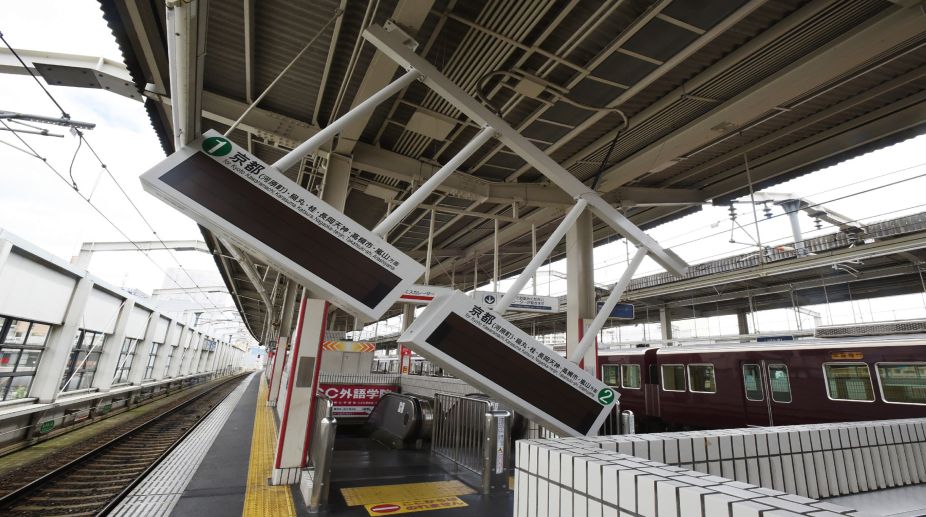At least three people were killed and over 50 others injured on Monday when an earthquake measuring 6.1 on the Richter scale jolted Japan’s Osaka city.
The victims comprised a nine-year-old girl and two men, Japanese broadcaster NHK reported. According to the local police, the nine-year-old girl died in the city of Takatsuki, north of Osaka city. Media reported she was trapped when a wall collapsed on her at school following the quake.
Advertisement
The earthquake was recorded at 7.58 a.m. and had its epicenter at about 13 km depth in Osaka Prefecture on the island of Honshu, the largest in the Japanese archipelago, according to the Japan Meteorological Agency (JMA).
Several buildings in Osaka and Takatsuki collapsed and were on fire.
Railway services in Osaka, Shiga, Kyoto and Nara, both high speed bullet trains and local rail services, were halted. Osaka’s Kansai Airport has been shut down while its runways were being checked for damage.
The authorities said that none of the 15 nuclear reactors in this region have been affected by the quake.
Prime Minister Shinzo Abe told reporters the government was “working united, with its first priority on saving people’s lives.” Abe said he had instructed his staff to “swiftly collect information on damage, make utmost efforts in rescuing and saving lives… (and) provide timely and appropriate information to the public.”
The Japanese government has set up a task force to gather information related to the strong earthquake and the Chief Cabinet Secretary, Yoshihide Suga, called on citizens to keep an eye on developments through the media.
NHK showed footage of firefighters tackling a blaze that ripped through a home north of Osaka city after the quake, and several broadcasters showed images of water gushing into the street from underground pipes.
Japan sits on the so-called Ring of Fire, one of the most active seismic zones in the world, and experiences earthquakes frequently, which is why most infrastructure is specially designed to withstand earthquakes.
Kansai Electric said on its website that around 170,000 homes in the Osaka region were without power.
Multiple small aftershocks followed the quake, and an official from Japan’s meteorological agency warned residents to remain on guard.
“There are fears that the risk of house collapses and landslides has increased in the areas shaken strongly,” said Toshiyuki Matsumori, in charge of monitoring quakes at the agency.
“Please make sure that you are fully on alert about seismic activities and information on rainfall, and stay clear of dangerous places.” Japan sits on the so-called Pacific “Ring of Fire” where a large proportion of the world’s earthquakes and volcanic eruptions are recorded.
On March 11, 2011, a devastating magnitude 9.0 quake struck under the Pacific Ocean, and a resulting tsunami caused widespread damage and claimed thousands of lives.
It also sent three reactors into meltdown at the Fukushima nuclear plant, causing Japan’s worst post war disaster and the most serious nuclear accident since Chernobyl in 1986.
(With inputs from agencies)











